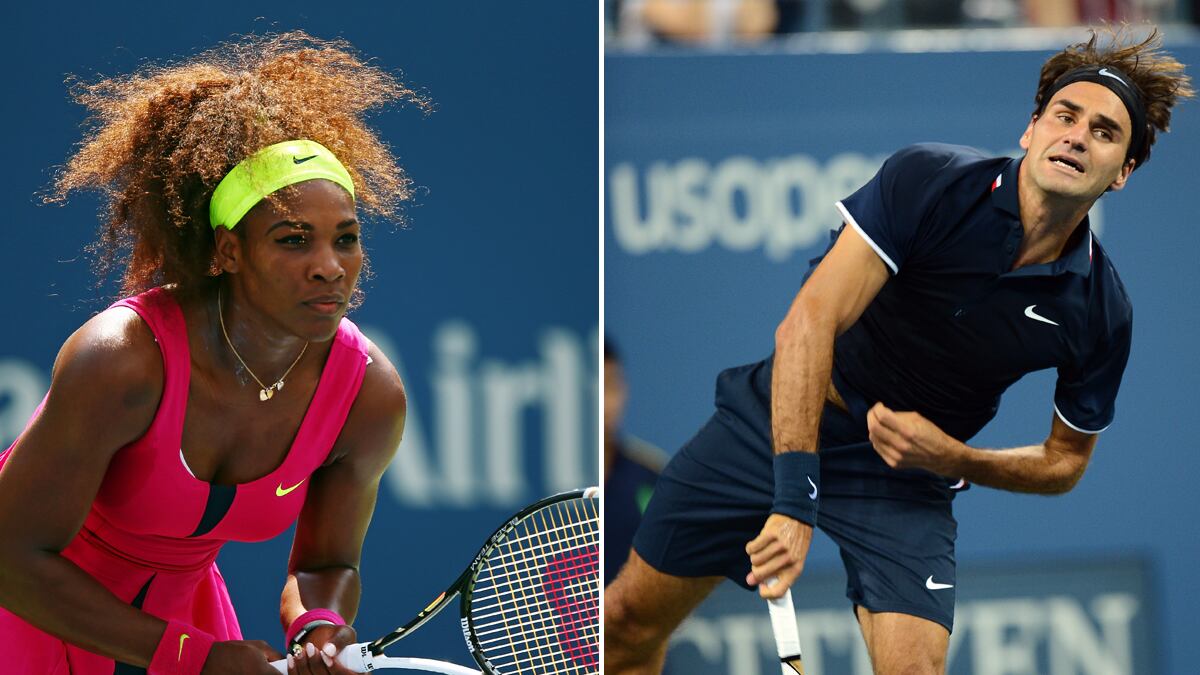On a blazing Saturday afternoon on Labor Day weekend at the U.S. Open, fans packed into the old-school Grandstand Court, their fortitude admired as temperatures tilted toward 90.

They had come to witness something of a new-school phenomenon: a teenager playing in the third round of a major. American Jack Sock, at a tender 19 the tournament’s youngest remaining man, was attempting to become the first teen to advance to the final 16 of the U.S. Open since Andy Roddick in 2001.
A decade or two ago, Sock’s surprise surge may not have seemed so unusual. After all, this is the sport that saw the rise of “Super Brat” John McEnroe at age 18, Pete Sampras win his first Open at 19, Jennifer Capriati grace the cover of Sports Illustrated at 13, and Serena Williams capture her first major at 17. Martina Hingis was just 16 when she won three of four Grand Slams in 1997, just years after teens Steffi Graf and Monica Seles had owned the game in their own rights, each before she turned 20.
But in recent years, teenagers have become an endangered species. In tennis, it seems, 30 really is the new 20.
You don’t have to look any further than the two favorites at this year’s U.S. Open: Roger Federer and Serena Williams. He’s 31 and she’s 30, yet they each clinched Wimbledon titles the last time around, and Williams won the 2012 Olympic singles title convincingly, not dropping a single set in six matches.
In the men’s draw alone, eight of the 32 players competing in the weekend’s third round are in their fourth decade, including Americans James Blake, Mardy Fish, and Andy Roddick. The 32 players’ average age is a mature 25.71. (Sock, who was ultimately felled by 27-year-old Spaniard Nicolas Almagro, was the youngest man on the list.)
And while Roddick announced earlier this week that he would retire at the end of the tournament, players such as Serena and 25-year-old Maria Sharapova made certain to clarify that they were far, far from giving up their grip on the top seeds, keeping the women’s game skewed older as well.
“Here I am at 25 years old,” Sharapova told reporters Friday. “Although I didn’t play for nine, 10 months in my career, I’m 25, and I feel like I have so many more years left. I still wake up in the morning and feel like I can be better and motivated. I have energy and I’m healthy.”
No player in the women’s top 10 is a teen. The youngest is Caroline Wozniacki, the former world No. 1, who is a seasoned 22 years old.
Current women’s No. 2 seed Agnieszka Radwanska, 23, laughed on Saturday when she was asked why older players were finding more success on the tour. “That’s a good question, actually.” She thought a moment. “I’m 23, I’m young,” she said, before reconsidering. “But I’m not ‘young’ anymore.”
For tennis watchers, this answer is complicated. Many owe the lasting success of older players to the increasing value placed upon raw power as racket technology has ratcheted up. Younger players just don’t have the sheer force or strength, it seems, to hit with the same oomph as their older counterparts.
There’s also the idea of older players lasting longer because of improved fitness techniques, caring for their bodies more soundly over years on the tour. Hingis, plagued by ankle injuries by the time she hit 21, is the perhaps the best example of health problems forcing an early retirement, though she later came back to achieve minor success. Injuries ended the career of Tracy Austin prematurely, and Bjorn Borg simply walked away from the sport as he saw a new wave of talent and athleticism rising.
Over the years, too, more avenues of career success have opened up. American John Isner, seen by many as the leader of American’s next generation of tennis stars following Roddick’s exit, took a circuitous route to the circuit, delaying a full-time pro career until he had graduated from college. Now 27, he’s relatively elderly for tennis, yet at the forefront of his country’s bench of talent.
Then there’s the age-defying women’s veteran Kimiko Date-Krumm, who continues to toil away on the court at the age of 41. Once a top-five player, Date-Krumm left the game in 1996 at 25 (she said she was tired of the tour), moving home to Japan and marrying race-car driver Michael Krumm. She didn’t return until she was 38, some 12 year later, and as recently as this week said she plans to play the entire 2013 season.
Whatever the reason for tennis’s older crop of talent, it can be a boon for viewers; veteran players make for dramatic theater. And tennis, like Hollywood, is theater. As players age and develop a certain character storyline on and off the court, their narratives grow. Kim Clijsters, who announced her retirement along with Roddick this last week, took time away from the game (she initially called it a “retirement”) to marry and have a child. When she returned, the already-popular “Kimmy” became the darling of the tour, her daughter Jada watching from mom’s player box, another wrinkle for fans to cuddle up to.
Andre Agassi, Lindsay Davenport, Justine Henin, and Capriati have all launched similar comebacks. So, too, has Serena, who has battled injuries and—last year—a traumatic health scare to return to the top of the game. Sure, an on-the-rise teen with little inhibition is a thrill to watch, but fans want to feel connected to who is on court, particularly in tennis, which can be a sport in which, with its one-on-one nature, fans feel as much a part of the battle as the players on the court.
Perhaps the most sound example is Serena, along with her sister Venus. The two didn’t play competitive junior tennis, their father instead choosing to focus them on practice and skill development. They achieved early success, yet took time away from the game—forced or not—to develop other interests. And to the delight of many, they are still playing top-tier tennis in their early 30s. An all-Williams doubles match at the Open? That can fill a stadium some two matches before it even begins.
This year in Queens, No. 4 seed David Ferrer will do battle with Lleyton Hewitt, the 2001 champion here. Their combined age: 61.
“It’s funny for me to hear about people that are a decade younger than me, even younger than that,” said James Blake, another 30-something, on Friday. “I feel like I was the young kid a minute ago.” Blake, now 32 and a father, had fans on their feet Saturday night, though he fell in straight sets to 21-year-old Canadian Milos Raonic.
But what the older players do on tour is help fans conjure up such childlike feelings. They remember when Federer did this or how Serena did that. For the game, losing the teens for a while is an alright thing. After all, age ain’t nothin’ but a number.






